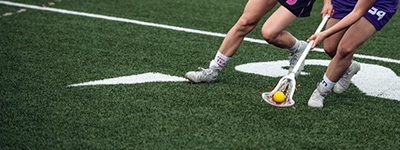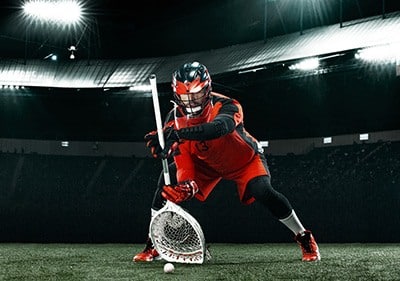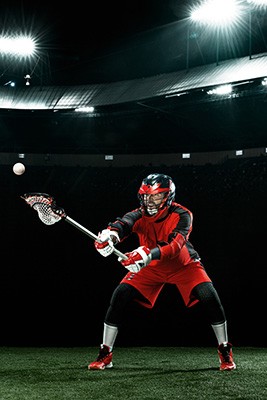Are you looking for training drills to take your lacrosse game to the next level? Look no further! We've compiled a list of the best lacrosse training drills that every expert should know and are guaranteed to improve your performance on the field.
So, if you're an experienced player, our top drills can help boost your technique and skills. Keep reading to discover what these challenging yet rewarding exercises have in store for all experts.
More...
Take Away Key Points:
Best Lacrosse Skills and Drills for Experienced Fans
If you have the basics and want to master the game of lacrosse quickly, the lacrosse drills listed below can help you.
Ensure you read the basics thoroughly to find the most suitable practice for your skills.
1. Lacrosse drills for high school
The following lacrosse drills are ideal for high-school and college lacrosse players. The drills are ideal for confined spaces, such as gymnasiums or small fields.
Some of the most popular drills include:

2. Lacrosse shooting drills
Here are some basic shooting and advanced drills for lacrosse players.
3. Lacrosse defense drills
Here are some of the best lacrosse defensive drills for advanced players:
Oklahoma defense drills
The players line up in the five and five mark. Offensive players are ten yards away from the defenders.
The practice requires the offense to carry the ball toward the defense, and the defense must take away the sweep.
The defense starts with their weak foot and sticks placed upfield. The exercise cuts off the sweep, allowing defenders to control the play.
If the offensive player breaks through, the defender should continue to defend closely and down-step.
Stir the Pot
The action starts with a defender picking up the ball and keeping his stick close to the ground. If you play defense, pick up the ball and rotate the stick while performing a toe drag.
The skill helps players turn their wrists over, retain possession, and create soft hands.
Hand speed and checking
This drill is ideal for teaching and conditioning and fine motor defensive skills for more success.
The skill needs two players. Experts will pair a defender with a stationary partner standing in front with gloves on and arms extended straight.
The defender forms an "M" sign by placing the stick on the top of one of the partner's gloves, making a mark between the gloves, and moving over the other glove. After the "M" moves, the defender traces a" W" moving underneath the gloves of the next person.
Finally, the defender makes a "figure 8" around the teammate's gloves in both directions. The two players have thirty seconds each to build strong hand-eye coordination.
Transition defense
This drill requires four cones above the attacking area - two for offense and two for defense. Add two cones on the side of the field. Two players - attackers run with the ball to the marked zone. Dour players - defenders race out to prevent the attack, and two extra defenders prevent a fast break.
This technique improves defenders' agility and conditioning, teaches lacrosse defense strategy, and establishes solid defensive positioning.
4. Lacrosse ground balls

Ground balls are a vital skill for any lacrosse player looking to gain a competitive edge. Also called loose balls, they are great for possession control so that your team can score goals and keep the other side from scoring.
For advanced players, training drills should focus on getting comfortable with the stick, balance and agility, and quick reflexes necessary to take control of loose balls.
Attacking players hustle after the ball, dropping their sticks and competing for the ball with their feet, shoulders, and hands. All defending players come back on defense when a ground ball appears to create an intense race for it.
Working on scooping ground balls up while turning and running or maneuvering around obstacles can give players a real advantage. It's also important to practice switching hands quickly to increase the chances of success on the field.
Ultimately, lacrosse ground balls are important because gaining possession of the ball gives one team an advantage, which is key to winning matches.
5. Best lacrosse drills for one person
A lacrosse ball, lacrosse stick, and a wall easily transform an average lacrosse player into an advanced player. The wall acts as a tool to make a player's stick skills exceptional. The wall also creates another person catching all passes and easily completes almost any drill.
The most famous technique is the wall-ball drill. It requires only one player to practice his catching skills, eye concentration, and footwork while hitting the ball against the wall. However, the wall can serve for other techniques as well, for more fun lacrosse drills.
Find the best drills for practicing alone below.
6. Best lacrosse drills for girls
Girls also use specific lacrosse drills to practice more and improve their game. Here are some of the best drills for the girls' games.
Lacrosse cradling drills
Lacrosse cradling drills practice scooping ground balls.
Experts need two balls and six players, five offensive and one defender. The players stay inside the square area, and one player starts as the defensive player. The other five players must roll the ball - passing drills along the field to each other to build their low-scooping skills.
Add another defender to make it more advanced.
Lacrosse dodging drills
These are skill-based drills to improve different dodge techniques. Players can work on a split, roll, or face dodge.
You need three players - a passer, an attacker, and a defender. The first player-defender turns her back to the coach and can't see the direction of the ball. The attacker is fifteen yards away from the coach, and the defender is in the middle.
The coach will point to the side they will pass to, and then when blowing the whistle, the attacker runs towards the defender, giving them a ball fake one way, moving the next to receive the quick pass back.
At the odd time, the attacker might choose not to make a fake and go for the real pass. The defender must act swiftly to where the ball is going and try to disrupt the play.
Passing drills
Passing drills requires pairing players up or putting them in groups of threes to do the drill. Each group has one ball they must pass around.
Players should face the target with their lead foot opposite their top hand on the stick. The top hand is just under the pocket, and the bottom hand is the pivot point for the stick.
The pocket should not fall too far back during the pass, and the top hand shall not be more than six inches above the shoulder. Otherwise, the ball might fall out.
The bottom arm is pulled toward the body in the direction of the pass, and it is the power hand.
Catching drills
Catching drills are similar to passing drills, but the stick is parallel to the body. The major difference is that players catch the ball in the box area.
Catching drills are important because throwing and receiving are such important parts of the game. Start with some stationary drills between paired up players. Have them make some throws and catches from their left side and then their right side until they are comfortable.
Move to catching drills where the players are running. They need to learn to throw and catch while on the move while also alternating between their right and left hands.
Finally, have them practice making poor throws so it’s more difficult to make the catch. This will get them practicing extending to catch passes or moving their stick from one side to the other.
Shooting drills
Shooting drills combine two skills into one drill.
You need two lines of players - one passing line and one receiving/shooting line. You can make two teams and use two nets. The first person - a shooting player of the first line drives toward the net, and the other line makes a pass.
Experts search for proper techniques in passing form and reception. When the attacker gains control of the pass, she turns, aims, and shoots on the net.
You can add a goalie to practice techniques as well.
7. Other drills for advanced players

Of course, there are other techniques for professionals. These include:
FAQs
What are the lacrosse drills to improve stick skills?
The best techniques include the waterfall, give-and-go, and Stickwork Inside the Center Circle drills.
What are the lacrosse drills to do inside?
The best drills to do inside include:
- Tap the fingers
- One-hand cradle
- One-hand splits
- Figure 8s
- High flips
- Low flips
What are the 7 running drills?
The drills include:
- High Knees
- Carioca
- Straight leg bounds
- A-Skip
- B-Skip
- Butt-kicks
- Butt-kicks (variation)
Summary
Now that you know some of the most popular and effective lacrosse drills for advanced athletes, it's time to get out there on the field and start practicing!
The more you drill, the better your skills will become. So remember to focus on perfecting your lacrosse training drills—for both men's and women's lacrosse—and before you know it, you'll be one of the best players on the team.

Freddy is the heart and soul of Lacrosse Runner. As a former athlete, Freddy is very passionate about Lacrosse. He keeps up with the sport’s changes and innovations and often tests the new equipment released by the leading manufacturers. Read more here
